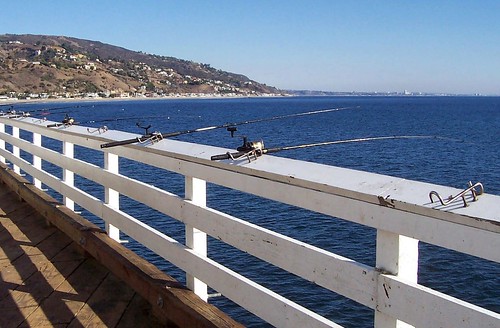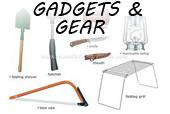Pole-Fishing for crappie is the most quiet, and efficient way to harvest crappies from shallow to med-depth weeds, brush piles and timber. In many instances, it is the only way you can reach them without hanging up. Poles allow you to drop the bait right in front of a crappie’s nose., and hoist the fish straight up and into the creel before it can run back into the cover.
Poles work equally well with jigs, live bait, or any combination of the two. It would be impossible to say which type of pole is the best, because they all work. Some are better suited to certain conditions, or types of fishing, and some are more economical, and a few are very versatile. I’ll discuss the pros and cons of different types from the simplest rig, to the high tech tournament rigs of the pros. Then you can decide for yourself which is best for you.
The most low tech rig (and the one that has probably caught more fish than all other fishing equipment put together) is the simple cane pole. Many an adolescent has whiled away the hours hauling in fish with nothing but a cane pole and a worm. Some of us oldsters have fond memories of using these archaic, but still efficient tools to put meat on the table in lean times. Many of us still use them today. It is somehow comforting to know that in this day of instant information and high-tech gadgets, one can still provide food for the family with a no-cost, reliable, old-fashioned fishing pole that you can make yourself.
There are around 1200 species of bamboo world-wide. There are only two that are indigenous to the U.S., Switch Cane ( Phyllostachy aurea), and Giant Cane (Phyllostachys vivax). These are not to be confused with Tonkin Cane (Psuedosasa amabilis), which is native to Southeast Asia and is used to make heirloom-quality flyrods. Both Switch, and Giant Cane can be found growing along bottomlands near rivers and other bodies of water all over the U.S., often growing together. Switch Cane averages about 10-12 feet long, and is generally narrower than Giant Cane, which can grow from 15 to 20 feet tall. Both species make excellent poles.
You’ll need a sharp machete, hatchet or hunting knife to cut the stalks. They are very strong and durable. You want to give considerable thought to what size shoots to cut. A pole that is very long and thick will be heavy and unwieldy, unpleasant to fish with. On the other hand, one that is too short and skinny may break if you hook into a Jaws wannabe, a not uncommon occurrence. Select shoots that are about 1 to 1-1/2 inches in diameter at the butt, and about 10′-14′ long. Cut several in different lengths so you have a few to choose from. When you get them home, saw off the butts at a joint, so that they are capped by the divider wood between sections. Next, take 320 grit sandpaper and sand the whole pole smooth, to avoid getting splinters in your hand. Be extra careful not to damage the slender tips.













